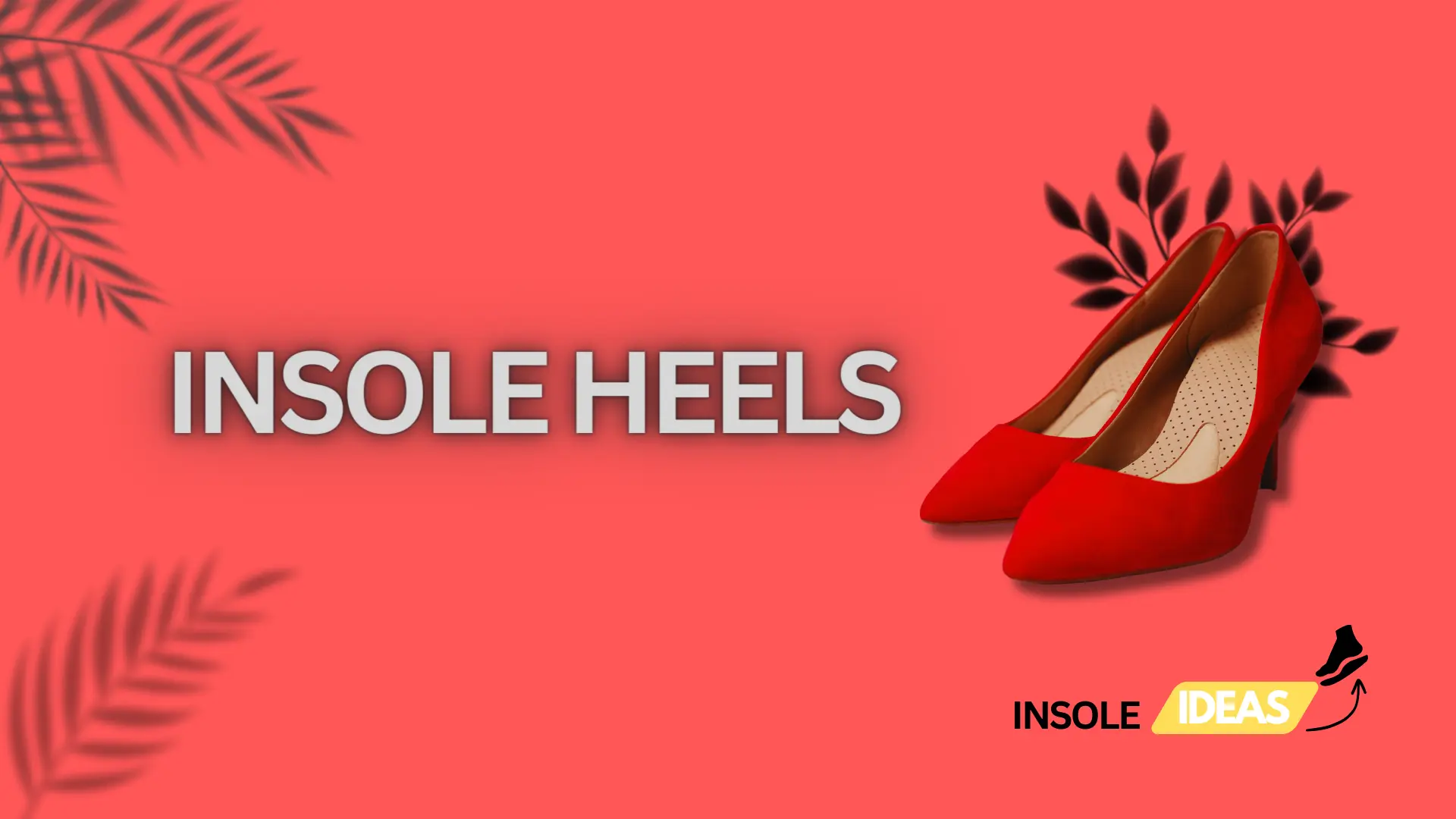Insole Heels: Fusion of Comfort and Style
Insole heels refer to the combined structure within footwear that provides both arch support (through the insole) and elevation (through the heel). They play a crucial role in ensuring comfort, stability, and proper posture while walking or standing.
Definition of Insole Heels
Insole heels are an integrated part of footwear, consisting of the insole that supports the bottom of the foot and the elevated heel that adds height and often alters the angle of the foot.
Importance of Insole Heels in Footwear
They are pivotal in determining the comfort level and structural integrity of footwear. Insole heels impact not only the feel but also the overall health and well-being of the wearer’s feet and body.
Components of Insole Heels
Insole
The insole serves various purposes: it provides cushioning, supports the arches of the foot, and absorbs shock during walking or running. Materials like foam, gel, or specialized fabrics are commonly used in crafting insoles.
Purpose and Function
Insoles distribute the pressure exerted on the foot, maintaining stability and comfort, especially in shoes with prolonged wear.
Materials Used
Different materials offer distinct benefits; for instance, memory foam provides adaptive cushioning, while gel insoles offer enhanced shock absorption.
Heel
The heel of footwear plays a crucial role beyond aesthetics. It affects posture, gait, and the distribution of body weight.
Types of Heels Used in Footwear
From stilettos to wedges, heels come in various shapes and sizes, each influencing the wearer’s posture and comfort differently.
Importance of Heel Support
A well-designed heel provides stability, balances the body’s weight distribution, and can significantly impact the wearer’s comfort and posture.
Benefits of Insole Heels
Comfort and Support
Insole heels contribute to proper foot arch support, maintaining the natural shape of the foot, and preventing discomfort or strain.
Impact on Foot Arches and Posture
They promote healthy arches, reduce the chances of conditions like plantar fasciitis, and assist in maintaining an upright posture.
Cushioning and Shock Absorption
The cushioning properties of insoles and the support offered by heels minimize the impact on joints, providing a more comfortable walking experience.
Factors Influencing Insole Heel Design

Foot Type and Shape
The design of insole heels often considers varying foot types and shapes. Individuals with high arches might require different support compared to those with flat feet or other foot conditions. Customized insoles cater to specific needs, providing tailored support for different foot shapes.
Shoe Type and Purpose
Insole heel design varies based on the intended use of the shoe. Athletic shoes might focus more on shock absorption and stability, while fashion footwear might prioritize aesthetics alongside moderate support. Each shoe type demands specific considerations in insole and heel design to fulfill their purposes effectively.
Material Selection and Technology
Advancements in material science and technology have greatly influenced insole heel design. From memory foams to high-tech gel inserts, materials are chosen for their comfort, durability, and ability to adapt to the wearer’s foot. Innovative technologies continue to emerge, enhancing the performance and comfort of insole heels.
Evolution of Insole Heels
Historical Perspective
The evolution of insole heels dates back centuries. Footwear has undergone significant transformations, from basic foot coverings to intricate designs integrating insole support and heel elevation. Historical context provides insight into how the concept evolved to meet various societal and functional needs.
Technological Advancements and Innovations
In modern times, technological advancements have revolutionized insole heel design. CAD (Computer-Aided Design) and 3D printing enable precise customization. Advanced materials and manufacturing techniques have led to more comfortable, durable, and supportive insole heels.
Future Trends in Insole Heel Design
Anticipated trends in insole heel design include further customization, such as smart insoles with embedded sensors for gait analysis and pressure mapping. Sustainable materials and manufacturing processes are also expected to gain prominence in response to environmental concerns.
Importance of Properly Fitted Insole Heels
Impact on Overall Foot Health
Wearing properly fitted insole heels is vital for maintaining good foot health. Ill-fitting footwear can lead to various issues like blisters, calluses, or even more severe conditions like plantar fasciitis. Properly fitted insole heels support the natural contours of the foot, reducing strain and potential injuries.
Avoidance of Common Foot-Related Issues
Adequate support from insole heels helps in preventing common foot problems. Conditions such as bunions, metatarsalgia, or even back pain can often be traced back to inadequate footwear support. Customized or well-designed insole heels can alleviate these concerns.
Customization and Individual Preferences
Customized insole heels cater to specific foot needs, providing enhanced comfort and support. Different preferences, such as extra arch support or cushioning, can be accommodated through customized insoles, ensuring a personalized fit for individuals.
Maintenance and Care of Insole Heels
Cleaning and Hygiene Practices
Regular cleaning and maintenance of insole heels are crucial for prolonging their lifespan. Depending on the materials used, cleaning methods may vary. Some insoles are machine washable, while others require gentle hand washing. Proper hygiene practices also prevent odor buildup.
Replacement and Repair Considerations
Insole heels, especially in high-use shoes, undergo wear and tear. Regular inspection helps identify signs of deterioration. Replacement or repair of insoles can restore comfort and support, extending the life of the footwear.
Prolonging the Lifespan of Insole Heels
Proper storage and usage contribute to prolonging the lifespan of insole heels. Rotating footwear, allowing them to air out, and avoiding excessive exposure to moisture or extreme temperatures can help maintain their integrity and functionality.
Conclusion
Insole heels are foundational components in footwear, providing essential support, comfort, and stability. They play a pivotal role in foot health and overall well-being.
The evolution of insole heels continues to prioritize innovation, customization, and functionality. Understanding their importance and ensuring proper care contributes significantly to prolonged comfort and overall foot health.







4 Comments